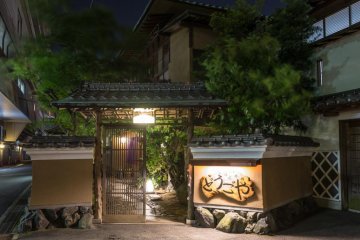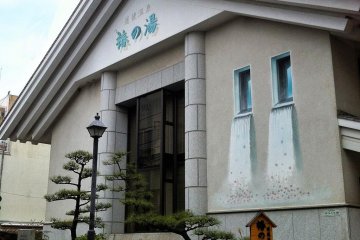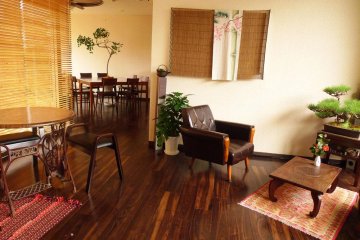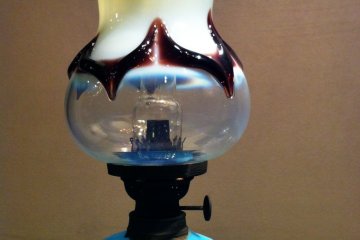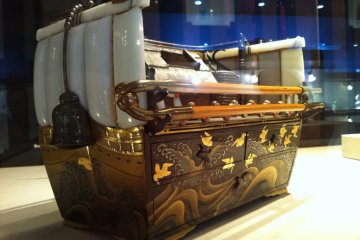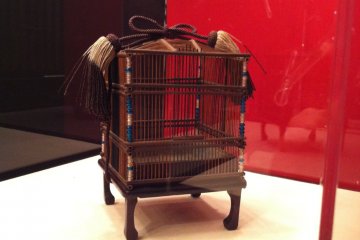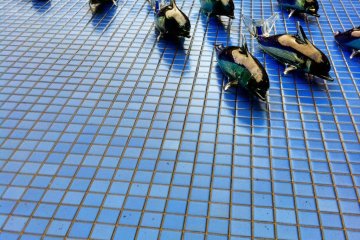Just up the hill from Dogo Onsen Honkan is the Yamanote Garden Place, a somewhat eccentric facility incorporating a bridal chapel, a café and a glass museum. It’s located in a pleasant garden with a pool of water that looks magnificently blue, thanks to a rather obvious lining of blue tiles.
To get to the Dogo Giyaman Glass Museum, you pass alongside this water feature and pay 600 yen at the entrance to the café. The museum is downstairs to the left. At the bottom of the stairs, you enter a little world of delicate beauty.
‘Giyaman’ is apparently a corruption of the word ‘diamond’, and the glass on display takes its name from the variety of deeply cut glass that sparkles like a diamond. And indeed, some of it does sparkle like diamonds, but there are all sorts of other types too—semi-opaque milky glass, deep blue glass with complex swirls of lighter blue, and vivid reds and greens.
The applications of the glass amazed me. There are glass tobacco pipes and smoking paraphernalia, a bird cage with tiny glass bars, insect cages for keeping chirping insects in summer, and even pillows of blue glass. Pity the person who must rest their neck on glass, however skillfully it may be molded to suggest pillowy softness. Of course there are more typical glass products such as glasses, bowls, and plates, but every example is exquisite. There are extraordinarily thin, colored sake cups and gourd-shaped flasks for sake. In the old days when sake was really the only alcoholic beverage of the Japanese, the care lavished on its presentation was extreme. Most of the wares on display here wouldn’t last two minutes in a modern kitchen.
Some of the other displays included the various types of glass used in Dogo Onsen Honkan, most notably the red glass of its tower. There are also animals—chickens with their eggs, fish, and some cicadas clinging to what looks like some illicit smoking equipment.
This glass, gathered from all over Japan, is from the Edo, Meiji and Taisho periods. Life in these times must have been austere in many ways, but the ‘giyaman’ glass shows that this austerity was tempered by fantastic elegance, for some people at least.
On the day that I visited, the whole museum smelled of stale water, as if something was leaking into the air conditioning from a blocked water feature. This inconvenience aside, I would strongly recommend the glass museum to lovers of beauty, design and history. As I entered the museum, I overheard a group of old people complaining about the price of entry. One old gentleman relented slightly by noting that there were a lot of rare things to see. I would agree on both counts. Lastly, I was pleased to see that there were no loud and ugly prohibitions against photography. So I happily photographed nearly everything.
Name of the facility in English and Japanese Dogo Giyaman Glass Museum (道後ぎやまんガラス美術館 Dogo Giyaman Garasu Hakubutsukan)



